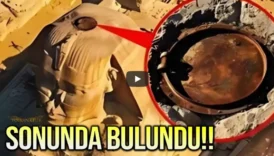Yajuj and Majuj: A Detailed Exploration of Their History, Mythology, and Role in the Apocalypse
Throughout history, tales of destruction and chaos have been interwoven into religious texts, legends, and cultural narratives. Among these, the story of Yajuj and Majuj (known as Gog and Magog in the Bible) stands out as a chilling prophecy of an apocalyptic event. These enigmatic groups are said to bring devastation upon humanity before being subdued or eradicated by divine intervention. But who are Yajuj and Majuj? Where do they come from, and how have they been represented in historical, religious, and cultural contexts?
- Yajuj and Majuj: A Detailed Exploration of Their History, Mythology, and Role in the Apocalypse
- The Historical Context of Yajuj and Majuj
- Connections to Historical Peoples
- Yajuj and Majuj in Islamic Tradition
- Dhul-Qarnayn’s Role in Containing Yajuj and Majuj
- Physical Characteristics of Yajuj and Majuj
- The Apocalyptic Role of Yajuj and Majuj
- Their Release
- The Consequences
- The Defeat of Yajuj and Majuj
- Cultural Legacy and Popular Media
- A Symbol of Human Trials
In this detailed analysis, we explore the origins, physical characteristics, and eventual rise of Yajuj and Majuj, delving into their connections to both ancient civilizations and eschatological beliefs.
The Historical Context of Yajuj and Majuj
The earliest mentions of Yajuj and Majuj trace back to religious texts and ancient traditions. They appear in:
- The Qur’an: Identified as destructive forces contained by divine intervention.
- The Bible: Known as Gog and Magog, referenced in the Books of Ezekiel and Revelation as powerful, apocalyptic forces.
- Jewish Tradition: Seen as agents of chaos and upheaval, symbolizing opposition to divine order.
Connections to Historical Peoples
Historians and scholars have often linked Yajuj and Majuj to real historical tribes.
- The Scythians: Ancient nomadic tribes who lived north of the Black Sea, characterized by their violent raids and warring nature.
- The Tatars and Mongols: Nomadic, expansionist groups from Central Asia who devastated many civilizations in the medieval period.
- Central Asian Nomads: Josephus, a Jewish historian, associated Gog and Magog with these groups, who were seen as harbingers of chaos.
Whether these associations are literal or metaphorical, the common thread is the destructive, anarchic nature attributed to Yajuj and Majuj.
Yajuj and Majuj in Islamic Tradition
The Islamic narrative places Yajuj and Majuj within the broader context of divine justice and eschatology. Their story is intertwined with the legend of Dhul-Qarnayn, a righteous and divinely-guided leader.
Dhul-Qarnayn’s Role in Containing Yajuj and Majuj
Dhul-Qarnayn (often equated with Alexander the Great or Cyrus the Great) is described as a just ruler tasked by Allah to protect vulnerable communities from the havoc wrought by Yajuj and Majuj. According to Islamic tradition:
- Dhul-Qarnayn traveled across the Earth, spreading justice and righteousness.
- He encountered a community plagued by Yajuj and Majuj’s raids.
- Rather than destroying them, Dhul-Qarnayn constructed a massive barrier between two mountains to contain Yajuj and Majuj.
This barrier, made of iron and reinforced with molten copper, is described in Surah Al-Kahf (18:94–98) as an impregnable structure. Yajuj and Majuj could neither climb over it nor dig through it.
Physical Characteristics of Yajuj and Majuj
Descriptions of Yajuj and Majuj vary across sources, but they are typically portrayed as grotesque, subhuman creatures with distinct features:
- Small stature: They are not giants but are described as humanoid beings of diminutive size.
- Wide faces, small eyes, and large ears: Their features emphasize their inhuman and fearsome nature.
- Primitive behavior: They rely on crude tools and exhibit an animalistic, destructive instinct.
These traits differentiate Yajuj and Majuj from the surrounding populations and underscore their chaotic and destabilizing presence.
The Apocalyptic Role of Yajuj and Majuj
In Islamic eschatology, the release of Yajuj and Majuj from their confinement is a major sign of the Day of Judgment. Their reemergence signals an unparalleled period of chaos and destruction.
Their Release
Islamic traditions describe how Yajuj and Majuj dig tirelessly to escape their confinement:
- Every day, they dig into the barrier but fail to break through.
- They vow to return the next day, but by divine will, the wall repairs itself overnight.
- This cycle continues until the appointed time when Allah allows them to escape.
The Consequences
Once freed, Yajuj and Majuj will unleash their destructive force upon the Earth:
- Environmental Devastation: They will drink rivers dry and consume all vegetation and livestock, leaving barren wastelands in their wake.
- Human Annihilation: No civilization will be able to withstand their onslaught. They will claim victory over vast territories, spreading fear and destruction.
- Blasphemous Arrogance: Tradition suggests they will even attempt to challenge divine authority, symbolizing their ultimate hubris.
The Defeat of Yajuj and Majuj
Despite their overwhelming numbers and destructive power, Yajuj and Majuj’s reign of terror will be short-lived. In Islamic belief, their downfall occurs as part of the divine plan:
- The Return of Jesus (Isa): In the final days, Jesus will descend to Earth and lead humanity against Yajuj and Majuj.
- Divine Punishment: Allah will afflict Yajuj and Majuj with a disease that causes them to die suddenly, leaving their corpses to rot on the Earth.
- Purification of the Earth: The overwhelming stench of their decaying bodies will fill the world, prompting Allah to send rain to cleanse the Earth.
This sequence mirrors the purging of evil during the time of Noah, symbolizing a rebirth for humanity after divine intervention.
Scholars and enthusiasts have speculated about the possible locations of Yajuj and Majuj’s confinement:
- Caucasus Mountains: Some suggest Dhul-Qarnayn’s wall is located in this rugged mountain range, possibly near modern-day Georgia or Azerbaijan.
- Kyrgyzstan and Uzbekistan: Recently, flat-topped mountains and ancient ruins in this region have been associated with Yajuj and Majuj’s story.
- Himalayas: The barrier’s description of being between towering mountains has led to speculation about this location.
While there is no definitive evidence of their existence or confinement, the myth of Yajuj and Majuj continues to captivate believers and historians alike.
Cultural Legacy and Popular Media
The story of Yajuj and Majuj has inspired numerous artistic and literary works:
- Religious Commentary: Scholars across centuries have debated their significance as both literal beings and allegorical symbols of human chaos.
- Fictional Adaptations: Modern films and books, such as The Lord of the Rings and Game of Thrones, draw parallels to Yajuj and Majuj with their depiction of subterranean or barbaric hordes rising to destroy civilization.
- Artistic Representations: Yajuj and Majuj are often depicted in Islamic art and manuscripts as small, grotesque figures attacking a colossal wall.
A Symbol of Human Trials
The story of Yajuj and Majuj transcends religious boundaries, symbolizing humanity’s eternal struggle against chaos and destruction. Whether seen as real beings awaiting their destined time or as allegories for societal collapse, their narrative serves as a powerful reminder of human vulnerability and the need for divine guidance.
Their tale also highlights the recurring themes of justice, resilience, and renewal in the face of overwhelming odds. As both a historical mystery and an apocalyptic prophecy, Yajuj and Majuj continue to provoke thought and inspire exploration into the depths of human faith and imagination.





